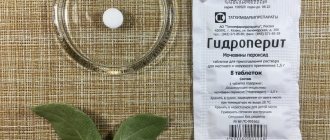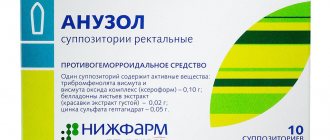Pharmacodynamics and pharmacokinetics
As you know, vitamin B6 is an indispensable participant in metabolic processes, normalizes and supports the activity of the nervous system. The phosphorylated form of pyridoxine is a coenzyme of a significant number of enzymes that affect the non-oxidative metabolism of amino acids, such as decarboxylation or transamination. This component is necessary for the metabolic processes of tryptophan , cysteine , glutamic , methionine and other amino acids. It is important both for histamine and for the normalization of lipid metabolism.
Metabolism of the main substance occurs in the liver, resulting in the formation of pharmacologically active metabolites: pyridoxal phosphate and pyridoxaminophosphate . The components are distributed mainly in muscle tissue, as well as in the liver and nervous system. Penetration of the drug into breast milk and through the placenta has been noted. The substance is excreted through the kidneys, partly through bile.
Indications for use
The drug is used to treat and prevent vitamin B6 deficiency in:
- B6-hypovitaminosis;
- toxicosis of pregnant women;
- sideroblastic anemia;
- leukopenia;
- diseases of the nervous system;
- sea and air sickness;
- atherosclerosis;
- diabetes mellitus;
- dermatitis;
- herpes zoster;
- neurodermatitis;
- psoriasis;
- exudative diathesis and so on.
Vitamin B6 (pyridoxine h/x) (amp. 5% 1ml No. 10)
A country
Russia
The country of production may vary depending on the batch of goods. Please check with the operator for detailed information when confirming your order.
Active substance
Pyridoxine + Threonine
Compound
1 ampoule contains: pyridoxine hydrochloride 50 mg, water for injection up to 1 ml
pharmachologic effect
Pyridoxine-Vial - vitamin B6. It is phosphorylated and, in the form of pyridoxal phosphate, is part of enzymes that catalyze decarboxylation and transamination. Plays an important role in the metabolism of tryptophan, glutamic acid, cysteine, methionine, as well as in the transport of amino acids across the cell membrane. Necessary for the activation of phosphorylase, for the formation of neurotransmitters, gamma-aminobutyric acid, glycine, serotonin. Participates in the metabolism of vitamin B12, folic acid, in the synthesis of porphyrins, and in the metabolism of unsaturated fatty acids. It is used to activate metabolic processes in myofibrils, especially during myocardial hypoxia. The daily requirement for adults is 2-2.5 mg, for children from 6 months to 1 year - 0.5 mg, 1-1.5 years - 0.9 mg, 1.5-2 years - 1 mg, 3- 4 years - 1.3 mg, 5-6 years - 1.4 mg, 7-10 years - 1.7 mg, 11-13 years - 2 mg, for boys 14-17 years - 2.2 mg, for girls 14–17 years old - 1.9 mg.
Indications for use
B6-hypovitaminosis, toxicosis of pregnant women, sideroblastic anemia, leukopenia, central nervous system diseases (parkinsonism, chorea minor, Little's disease, radiculitis, neuritis, neuralgia, Meniere's disease), sea and air sickness, atherosclerosis, diabetes mellitus, seborrheic and non-seborrheic dermatitis, herpes zoster , neurodermatitis, psoriasis, exudative diathesis, use of drugs from the isoniazid group.
Mode of application
Subcutaneously, intramuscularly and intravenously. Adults are usually prescribed 0.05-0.1 g per day in 1-2 doses, children 0.02 g. The course of treatment for adults is 1 month, for children 2 weeks. For the treatment of sideroblastic anemia - 0.1 g intramuscularly 2 times a week. It is advisable to simultaneously take folic acid, cyanocobalamin, and riboflavin. For parkinsonism - 2 ml of 5% solution per day intramuscularly. The course of treatment is 20-25 injections. After 2-3 months the course is repeated. For depression of involutional age, 0.2 g per day is administered intramuscularly.
Interaction
The effect is reduced by isoniazid, cycloserine, and penicillamine. Pharmaceutically incompatible with vitamins B1 and B12. Weakens the antiparkinsonian activity of levodopa.
Side effect
- allergic reactions (including anaphylactic shock) - irritation of the gastric mucosa, abdominal pain - "pyridoxine dependence" syndrome with long-term administration of pyridoxine at a dose of 100-200 mg/day. It is characterized by seborrhea, glossitis, confusion, delayed growth and development, anemia, and convulsions.
Contraindications
Hypersensitivity. With caution: peptic ulcer of the stomach and duodenum.
Overdose
Overdose symptoms occur when pyridoxine is administered in large doses (200-2000 mg/day or more). Characteristic development of numbness of the hands and feet, the appearance of a feeling of compression in them. Treatment is symptomatic therapy (administration of small doses of neostigmine or galantamine to improve neuromuscular transmission). There is no specific antidote.
special instructions
Pregnancy and lactation Pyridoxine crosses the placenta and is excreted into breast milk. The use of pyridoxine in high doses during pregnancy and lactation can lead to the development of “pyridoxine dependence” in children. It is not recommended to exceed the physiological requirement for pyridoxine during pregnancy (2-2.3 mg/day). Pyridoxine enhances the synthesis of dopamine in the central nervous system (which acts as prolactostatin) and can stop lactation in nursing mothers. Use with caution. Caution must be exercised when prescribing pyridoxine to patients with gastric and duodenal ulcers, coronary artery disease, because Taking the drug may cause an exacerbation of the disease. Effect on the ability to drive vehicles and operate machinery. The use of pyridoxine does not affect the patient’s ability to drive a vehicle or other operator activities.
Storage conditions
Room temperature
Dispensing conditions in pharmacies
On prescription
Instructions for use of Pyridoxine (Method and dosage)
Instructions for use recommend taking Pyridoxine tablets orally for the treatment of hypovitaminosis . For adult patients, a dose of 80 mg is prescribed, taken 4 times a day.
Vitamins in ampoules, like Pyridoxine-Vial , instructions for use indicate use in a daily dosage of 50-150 mg. Subcutaneous, intramuscular or intravenous administration is allowed. The duration of therapy is determined by the severity and type of disorder. When preventing vitamin B6 deficiency, about 40 mg per day is prescribed.
Interaction
Concomitant use with isoniazid, cycloserine, and penicillamine reduces the effectiveness of pyridoxine. Pharmaceutical incompatibility of vitamin B6 with and B12 has been noted. This drug significantly reduces the antiparkinsonian activity of levodopa.
Combination with hormonal contraceptives can increase the concentration of pyridoxine in the blood plasma. Use with phenytoin and phenobarbital may reduce the plasma concentrations of these components.
Signs and consequences of overdose
An overdose of vitamin B6 tablets is rare, since the drug is easily excreted from the body. If the dose is exceeded, the patient experiences the following symptoms:
- stomach ache;
- dizziness;
- migraine;
- increased excitability;
- nausea;
- general weakness;
- increased body temperature;
- dyspnea.
An overdose can occur when the daily dose is regularly exceeded, due to increased sensitivity to B6. Regular consumption of large doses of the vitamin can cause a decrease in the amount of protein in the tissues of muscles and internal organs.
There is no specific treatment for overdose. The patient is stopped taking the drug and given symptomatic treatment.
Analogs
Level 4 ATC code matches:
Medobiotin
Calcium Pantothenate
Volvit
Nicotinamide
Alpha Tocopherol Acetate
Riboflavin
Pyridoxine Hydrochloride
Vitrum Vitamin E
Pyridoxine is a vitamin that is included in many combination drugs, for example: Magne Wb, Pernexin elixir, Hepasteril-A, Hepasteril-B, Lipostabil, Essentiale.
Analogs of the drug are: Vitamin B6, Pyridobene, Pyradoxin, Adermin, Becilan, Pirivitol, Bedoxin, Benadon, Hexabetalin, Hexabion, Hexavibex and others.
The combination Benfotiamine + Pyridoxine is a fat-soluble analogue of vitamin B1 or thiamine . This combination normalizes the functions of the nervous system, taking part in carbohydrate metabolism, replenishing the deficiency of vitamin B1.
Pyridoxine for hair
Vitamin masks prepared at home are very popular. Pyridoxine for hair is often used for this purpose. It is known that this substance has a positive effect on hair growth and normalizes blood circulation.
To make a mask for medium-length hair, use Pyridoxine-Vial in ampoules - about 4-5 pieces.
You need to mix a spoonful of castor, olive and burdock oils. Heat this mixture in a water bath, add Pyridoxine-Vial and any other essential oils that suit your hair type. Mix everything well and apply to hair. You can put on a cap and wait for 30-40 minutes. Then wash your hair and rinse well with cool water. Practice shows that such a product makes hair not only shiny and silky, but healthy and strong.
Reviews about Pyridoxine
Medical websites and forums in most cases contain positive reviews about Pyridoxine. This drug is prescribed to many patients in the complex treatment of a variety of disorders, for example: hypovitaminosis B6, leukopenia, atherosclerosis, diabetes mellitus, herpes zoster, psoriasis, neurodermatitis and so on. Almost always, this vitamin significantly accelerates the healing effect.
However, some users ask: Pyridoxine – what is it? And when they find out that this is the name of vitamin B6, they are very surprised. As you know, Pyridoxine helps well with toxicosis in pregnant women, eliminates the symptoms of air and sea sickness. But not many people know that this substance is used in combination therapy for diseases of the central nervous system.
It should be noted that patients often use not the drug in ampoules, but its tablet form.
Among the many positive reviews, there are reports of the development of negative effects. In some patients, while taking this medicine, the acidity of the gastric contents increased, causing severe pain in patients with gastritis. However, experts say that following the dosage and taking into account contraindications - ulcers and stomach diseases, will not lead to the development of side effects, since the drug is well tolerated. In rare cases, allergic reactions develop, but, as a rule, all symptoms disappear after discontinuation of the drug.
Side effects and allergies
The instructions for vitamin B6 tablets indicate the following side effects:
- increased acidity of gastric juice;
- pain in the epigastrium;
- decreased intensity of milk production in lactating women;
- feeling of tightness in the limbs.
Allergic reactions are rare and occur against the background of increased sensitivity to the active substance. Allergy symptoms:
- skin redness;
- itching;
- hives;
- nausea;
- vomit;
- Quincke's edema.
Pyridoxine price, where to buy
For Pyridoxine tablets, the price varies between 40-60 rubles.
The price of Pyridoxine in ampoules is 20-35 rubles.
- Online pharmacies in RussiaRussia
- Online pharmacies in UkraineUkraine
- Online pharmacies in KazakhstanKazakhstan
ZdravCity
- Pyridoxine (Vit B6) tab.
10mg n50Ozone LLC 77 rub. order - Pyridoxine (Vitamin B6) solution for in. 5% 1ml 10 pcs. Borisov plant
47 RUR order
- Pyridoxine hydrochloride tab. 10mg 50pcsOzon LLC
79 RUR order
Pharmacy Dialogue
- Vitamin B6 (pyridoxine h/x) (amp. 5% 1 ml No. 10) DHF JSC
34 RUR order
- Vitamin B6 (pyridoxine h/x) (tab. 10 mg No. 50) Ozone LLC
61 rub. order
- Pyridoxine h/x (Vitamin B6) (tab. 10 mg No. 50) Ozone LLC
63 RUR order
- Pyridoxine (Vitamin B6) (amp. 5% 1 ml No. 10) Biosynthesis JSC
40 rub. order
- Vitamin B6 (pyridoxine h/x) (amp. 5% 1ml No. 10) BZMP
50 rub. order
show more
Pharmacy24
- Pyridoxine-Darnitsa 5% 1 ml No. 10 solution for injection
30 UAH. order - Pyridoxine hydrochloride (Vitamin B6) 50 mg/ml 1 ml N10 injection solution AT "Lekhim-Kharkiv", Ukraine
27 UAH order
PaniPharmacy
- Pyridoxine hydrochloric solution d/in. 5% amp. 1ml No. 10
21 UAH order
- Pyridoxine solution d/in 50 mg/ml amp. 1ml No. 10 Ukraine, Lekhim-Kharkov CJSC
25 UAH order
- Pyridoxine hydrochloric solution d/in. 5% amp. 1ml No. 10 Ukraine, Health LLC
26 UAH order
- Pyridoxine hydrochloric solution d/in. 5% amp. 1ml No. 10 Ukraine, Darnitsa ChAO
36 UAH order
show more
Drug interactions
Vitamin B 6 tablets differ in a number of drug interactions:
- levodopa - reduces activity;
- diuretics - increases efficiency;
- oral contraceptives - reduce the therapeutic effect of B6;
- anti-tuberculosis drugs - reduces toxic effects on the liver;
- Magnesium preparations – increases efficiency.
Knowing how to properly take vitamin B6 in tablet form, you can avoid negative side effects and increase the therapeutic effect of taking it.
Solgar, Vitamin B6, 100mg, 100 Tablets
516 rub.
More details




